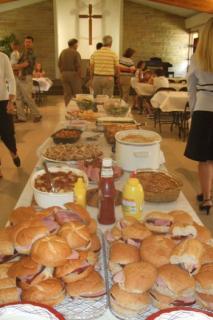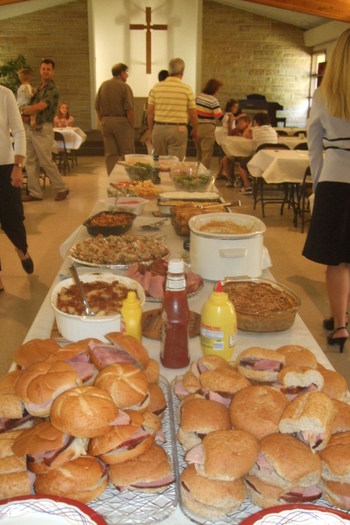KTXS News reports that what started out as a good deed could have potentially bad consequences – after 40,000 pounds of contaminated chicken was mistakenly donated to charities in the Brownwood area two weeks ago.
After a rollover accident in Mills County, Texas, on February 10, 2012, Brown County Health Department received a report that 40,000 pounds of partially thawed and potentially contaminated chicken was being given away in Brown County.
Texas Department of Public Safety worked the accident scene until approximately 9:30pm and condemned the trailer load of chicken due to its partial thawing and possible health risks said .jpg) Brownwood/Brown County Health Inspector Paul Coghlan. He explained that the chicken posed a hazard with consumption of either salmonella or food poisoning, both of which can be life threatening to anyone with a compromised immune system.
Brownwood/Brown County Health Inspector Paul Coghlan. He explained that the chicken posed a hazard with consumption of either salmonella or food poisoning, both of which can be life threatening to anyone with a compromised immune system.
After the insurance company released the contents of the trailer to be disposed of on February 15th, someone from the company decided to take the chicken, not knowing of the health risk that it posed, to non-profit agencies such as Good Samaritan Ministries and the Salvation Army in Brownwood, according to Coghlan. Both of these agencies refused the donation because they are required to only buy or accept raw meats from licensed distributors. The man then went to local churches and donated many cases of chicken which were then passed on to individuals in need, Coghlan said.
As soon as Coghlan received the report about the man possibly donating the contaminated chicken, he and Dr. James Hays began trying to find where the chickens were distributed. They also notified the Brownwood Regional Medical Center emergency room so that cases of food poisoning or salmonella could be tracked. The man who donated the chicken was located and he gladly cooperated, giving officials a list of places he left the chicken, Coghlan said. Brownwood Police were also called in to assist in the search and interview of possible recipients of the tainted meat.
“The man was trying to do a good deed, unfortunately some people don’t know how to handle meat safely,” said Coghlan. “I feel like we would have seen something by now if anyone was going to get sick from the meat; however it does still have potential to be dangerous.”
Coghlan stated that some of the people who received the chicken would not give the meat back; however, they were warned of the possibility that they may become ill if they consumed it. They were .jpg) also given tips on how to tell if chicken is contaminated, to look for air in the packaging which signals decay, a slimy feel to the meat, or a foul odor when the packaging is opened.
also given tips on how to tell if chicken is contaminated, to look for air in the packaging which signals decay, a slimy feel to the meat, or a foul odor when the packaging is opened.
Of the 40,000 pounds of chicken on the trailer, less than 3000 pounds have been accounted for and the public is still urged to dispose of this chicken if received.
The risk of cross-contamination seems grossly underestimated.


 Catholicism was the best of all religions; I was trying to be polite, and said I primarily viewed religion as a spectator sport – at least for me.
Catholicism was the best of all religions; I was trying to be polite, and said I primarily viewed religion as a spectator sport – at least for me. was foodborne. However, the ongoing investigation has yet to determine if a virus or bacteria is responsible.
was foodborne. However, the ongoing investigation has yet to determine if a virus or bacteria is responsible..jpg) Brownwood/Brown County Health Inspector Paul Coghlan. He explained that the chicken posed a hazard with consumption of either salmonella or food poisoning, both of which can be life threatening to anyone with a compromised immune system.
Brownwood/Brown County Health Inspector Paul Coghlan. He explained that the chicken posed a hazard with consumption of either salmonella or food poisoning, both of which can be life threatening to anyone with a compromised immune system..jpg) also given tips on how to tell if chicken is contaminated, to look for air in the packaging which signals decay, a slimy feel to the meat, or a foul odor when the packaging is opened.
also given tips on how to tell if chicken is contaminated, to look for air in the packaging which signals decay, a slimy feel to the meat, or a foul odor when the packaging is opened. possible foodborne illness outbreak associated with the Sacred Heart Turkey Dinner that was held on the evening of November 8.
possible foodborne illness outbreak associated with the Sacred Heart Turkey Dinner that was held on the evening of November 8. 
 Baptist church caught what media described as a stomach virus, including the pastor’s family.
Baptist church caught what media described as a stomach virus, including the pastor’s family.
 That’s what happened in April, 2009, when the Los Angeles Police Department (LAPD) notified officials from the Los Angeles County Department of Public Health (DPH) in California about a group of preschool teachers with nausea, dizziness, headache, and numbness and tingling of fingertips after consumption of brownies purchased 3 days before from a sidewalk vendor.
That’s what happened in April, 2009, when the Los Angeles Police Department (LAPD) notified officials from the Los Angeles County Department of Public Health (DPH) in California about a group of preschool teachers with nausea, dizziness, headache, and numbness and tingling of fingertips after consumption of brownies purchased 3 days before from a sidewalk vendor.  Manhattan feels markedly different this fall. Returning to campus, I’ve seen
Manhattan feels markedly different this fall. Returning to campus, I’ve seen The policy for distributing communion wafers has always been to wash your hands before the service starts, but now there is also a bottle of antibacterial available to use immediately before giving out communion. St. Isidore’s is just one of many churches around the country (and globally) implementing these anti-flu strategies.
The policy for distributing communion wafers has always been to wash your hands before the service starts, but now there is also a bottle of antibacterial available to use immediately before giving out communion. St. Isidore’s is just one of many churches around the country (and globally) implementing these anti-flu strategies. 
 But a Lee County, Florida, Sheriff’s Office report
But a Lee County, Florida, Sheriff’s Office report